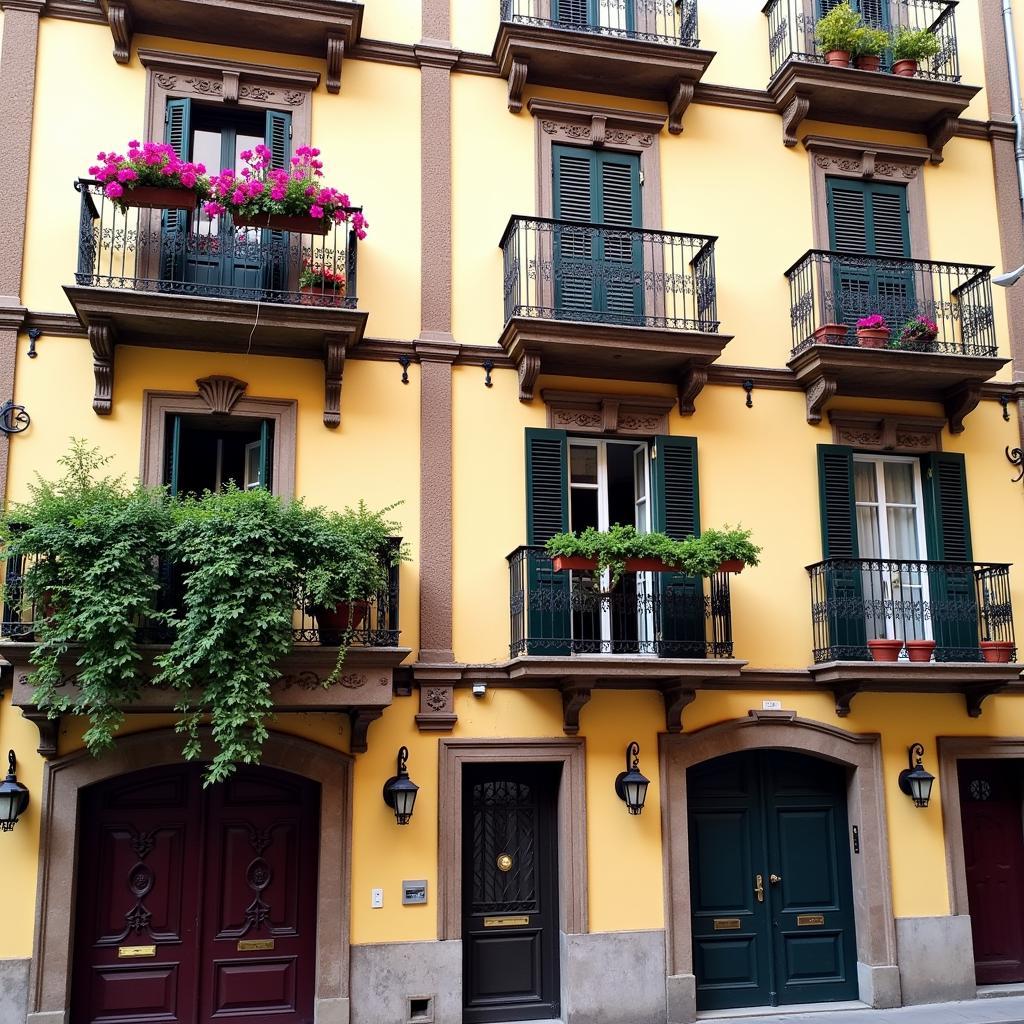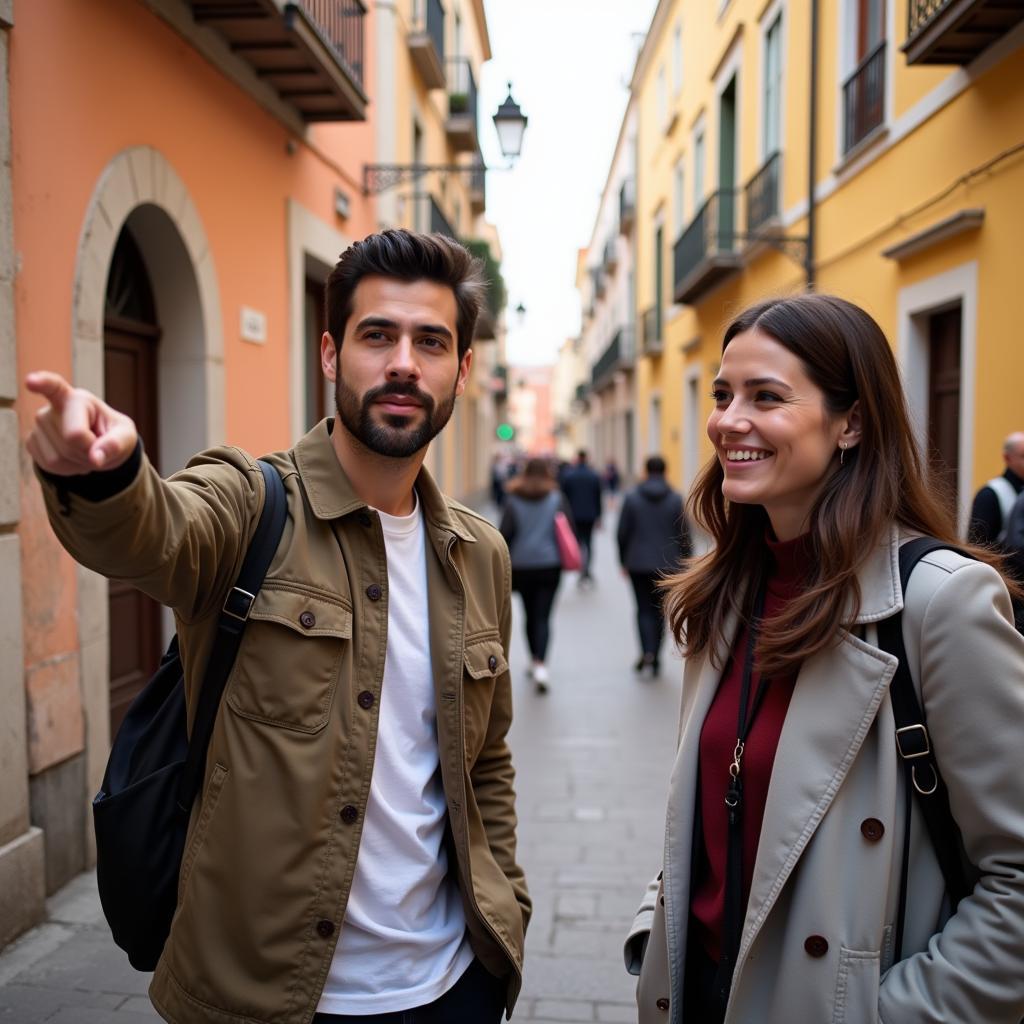Stepping into the intricate world of Spanish addresses can feel like navigating a labyrinth for the uninitiated. While the charm of cobblestone streets and sun-drenched plazas is undeniable, finding your way around, especially to a specific home, can be an adventure in itself. Unlike the standardized systems of many countries, Spain boasts a unique approach to address markers that blends tradition with practicality.
Unveiling the Mysteries of Spanish Addresses
Instead of relying solely on street numbers, Spanish addresses incorporate a fascinating mix of descriptive elements that paint a vivid picture of the location. Don’t be surprised to find references to historical landmarks, former businesses, or even whimsical nicknames embedded within the address itself. This system, deeply rooted in history, reflects a time when detailed descriptions were essential for finding one’s way in a world before GPS and digital maps.
For instance, imagine searching for “Plaza Mayor, 3, 2nd floor, door left”. This address tells a story. You’re not just looking for a building number, but a specific apartment within a building facing the bustling heart of a town square. It’s this attention to detail that makes navigating Spanish addresses an engaging part of experiencing the local culture.
Navigating the Nuances: Common Elements in Spanish Addresses
While the specific format may vary slightly across regions, there are some common elements you’re likely to encounter:
1. Calle (Street): The most basic element, often abbreviated as “C/”. Don’t be surprised to find streets named after historical figures, local saints, or significant events.
2. Número (Number): Typically following the street name, the building number might not always follow a sequential order.
3. Piso (Floor): In multi-story buildings, the “piso” indicates the floor level. Ground floor is usually “Bajo”, followed by “1°, 2°, 3°” and so on.
4. Puerta (Door): If multiple apartments share a landing, “puerta” identifies the specific door.
5. Escalera (Staircase): In larger buildings, “escalera” might be used to specify the staircase leading to your destination.
 A typical Spanish apartment building adorned with colorful balconies.
A typical Spanish apartment building adorned with colorful balconies.
Modern Meets Traditional: Technology Bridges the Gap
While the traditional address system might seem charmingly antiquated, fear not! In today’s digital age, technology seamlessly complements these unique markers.
“When I first arrived in Seville, I was completely lost,” shares Miguel Santos, a seasoned tour guide with me Stay in Spain. “But now, with Google Maps and local apps, finding even the quirkiest addresses is a breeze. It’s amazing how technology helps preserve and navigate our cultural heritage.”
Indeed, most mapping apps and online platforms are well-equipped to decipher Spanish addresses, making your explorations smooth and stress-free.
Beyond the Address: Embracing the Art of Exploration
Navigating Spanish addresses is more than just finding your way; it’s about embracing the local rhythm, engaging with friendly faces, and discovering hidden gems tucked away in unexpected corners.
- Ask for directions: Don’t hesitate to ask locals for help! Spaniards are generally warm and welcoming, and you might even get a fascinating anecdote or two along the way.
- Look for landmarks: Familiarize yourself with prominent landmarks mentioned in addresses, making it easier to orient yourself.
- Enjoy the journey: Embrace the adventure! Getting a little lost can lead to serendipitous discoveries and a deeper appreciation for the local way of life.
 A friendly Spanish local assisting with directions, gesturing with a warm smile.
A friendly Spanish local assisting with directions, gesturing with a warm smile.
Finding Your Way Home with me Stay in Spain
At me Stay in Spain, we understand the nuances of Spanish addresses and are dedicated to ensuring your homestay experience is seamless from the moment you arrive. Our detailed welcome guides provide clear instructions and local tips to help you navigate like a pro. We’re here to support you every step of the way, so you can focus on immersing yourself in the vibrant culture and creating unforgettable memories.
FAQs
1. Do I need to know Spanish to understand addresses?
While knowing basic Spanish can be helpful, it’s not essential. Technology and the helpful nature of locals bridge the language barrier.
2. Are street names always in Spanish?
In some regions with multiple languages spoken, you might encounter street names in both Spanish and the local dialect.
3. What if I get lost?
Don’t panic! Ask locals for help or use a mapping app to reorient yourself.
4. Do all addresses in Spain follow this system?
While the traditional system is prevalent, modern developments might have more standardized addresses.
5. How can me Stay in Spain assist with addresses?
We provide detailed instructions and local tips in our welcome guides, ensuring you can easily find your way.
Contact us
When you need support, please contact us at:
- Phone number: 0793157979
- Email: [email protected]
- Address: 73C6+XR, Trung Sơn, Việt Yên, Bắc Giang, Việt Nam.
We have a 24/7 customer service team to assist you.